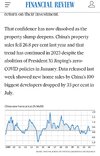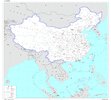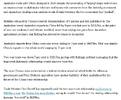Dona Ferentes
Beware of geeks bearing grifts
- Joined
- 11 January 2016
- Posts
- 18,493
- Reactions
- 25,400
China’s property slump is also affecting overseas housing markets, including Australia. While it is difficult to get capital out of China, households hoarding savings that they would have previously spent on Chinese real estate are now eyeing investments in countries such as Australia, research shows.
Real estate firm Juwai IQI says Australia now tops the list of overseas markets such as Canada, the United Kingdom and the United States for Chinese investors. This is also being driven by an exodus of China’s wealthy due to last year’s COVID-19 lockdowns and Xi’s common prosperity policies.
A report by Juwai estimates about 712,000 people from the country will migrate to the US, Canada and Australia from this year to 2025. Australia expects about 70,000 new migrants from China in the next two years...
... and

Real estate firm Juwai IQI says Australia now tops the list of overseas markets such as Canada, the United Kingdom and the United States for Chinese investors. This is also being driven by an exodus of China’s wealthy due to last year’s COVID-19 lockdowns and Xi’s common prosperity policies.
A report by Juwai estimates about 712,000 people from the country will migrate to the US, Canada and Australia from this year to 2025. Australia expects about 70,000 new migrants from China in the next two years...
... and










